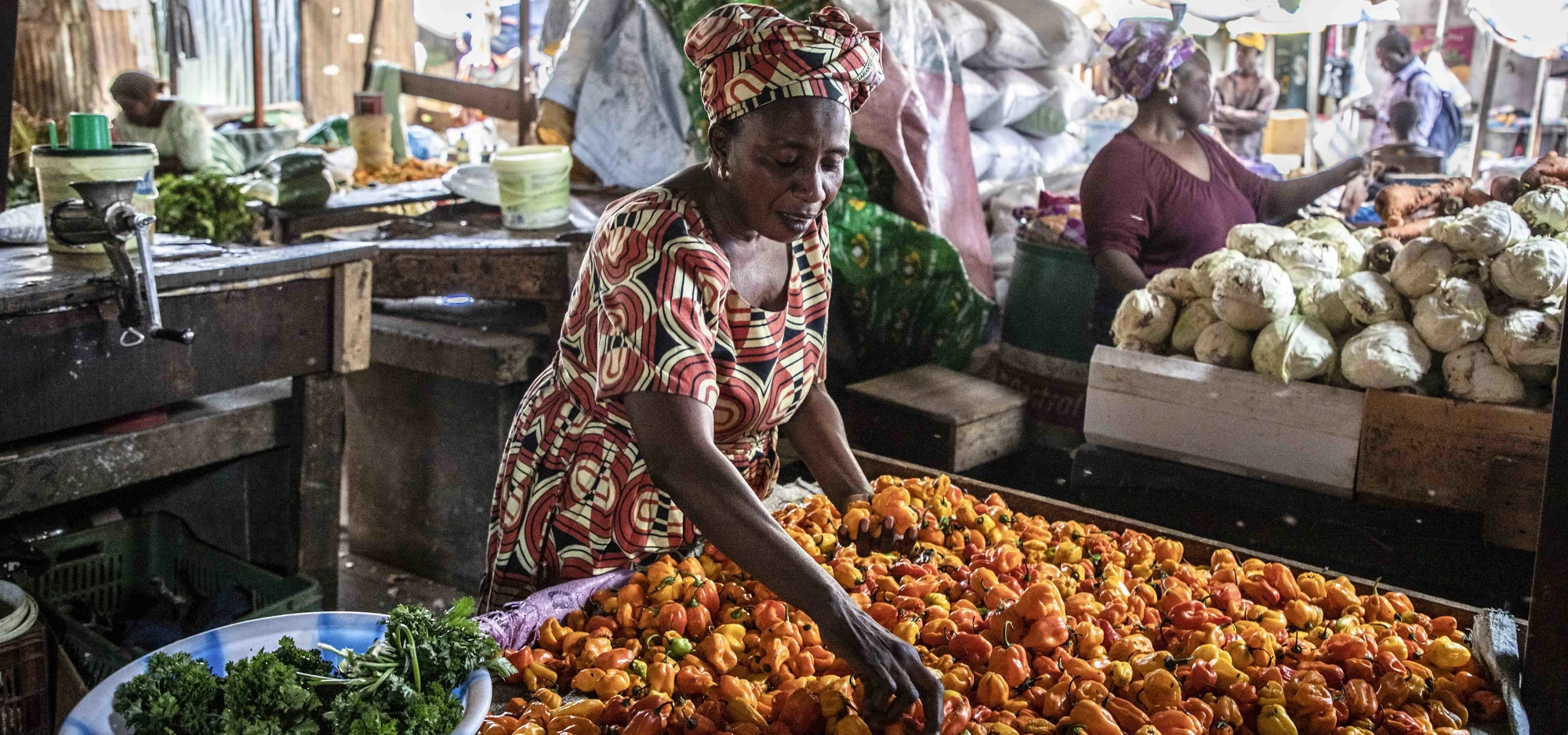 Adaptive social protection programs can help address hunger and chronic malnutrition. Copyright: Jason Florio/World Bank
Adaptive social protection programs can help address hunger and chronic malnutrition. Copyright: Jason Florio/World Bank
We live in a world of crisis, with increasingly frequent, interconnected, and devastating shocks caused by climate change and natural disasters, economic crises, health emergencies, conflicts, and forced displacement.
These shocks hit the poorest people the hardest and make our ambition of eradicating extreme poverty much more challenging. In 2022, 258 million people across 58 countries faced acute food insecurity, and nearly 30 percent of the world’s population faced moderate to severe food insecurity. As crisis vulnerability has become a structural challenge in many parts of the world, countries need to build sustainable systems that can help governments better anticipate, mitigate, and respond to crises while also addressing underlying vulnerabilities.
Over the last decade, adaptive social protection (ASP) has emerged as an innovative and comprehensive approach to assist poor and vulnerable people in building resilience to shocks and protecting their assets and human capital–their health, education, and wellbeing. Adaptive social protection refers to the policies, programs, and strategies designed to support vulnerable populations in ways that can adapt to changing circumstances. ASP programs can be scaled up and down as needed and help people stabilize incomes and consumption when shocks occur, avoiding negative coping mechanisms, like eating less or selling assets. The programs are especially effective when they reach families that are most at risk of hunger or malnutrition.
Adaptive social protection programs also have the potential to address hunger and chronic malnutrition at scale by providing access to the right food, health, and nutrition services. For example, in Peru, the World Bank supported the government in using conditional cash transfers coupled with nutrition education and child growth monitoring, which helped cut national stunting rates in half. In Niger, a government-led program for poor households increased food consumption by 15 percent and food security by 19 percent within just 18 months.
An underappreciated feature of adaptive social protection is the potential to strengthen local food systems. ASP programs can help people invest in productive assets along the food value chain (e.g., livestock, seeds, or farm equipment) and diversify their sources of income, thereby reducing their vulnerability to shocks, including those arising from climate change. Such programs can encourage production and consumption of healthy food by developing and empowering small-scale farmers, fishers, processors, and retailers – especially women. In Yemen, a World Bank operation provided farms with tomato, wheat, and sorghum seeds and other inputs, creating 6,400 jobs, and enhancing access to nutritious food.
ASP can also help decarbonize food systems while building resilience against shocks. Food systems account for 34 percent of man-made greenhouse gas emissions. In Liberia, an employment and livelihoods support project will pilot solar dryers that can both reduce food waste and emissions while increasing nutrient supply during the lean season. As the climate crisis escalates, ASP can help deliver on the loss and damage agenda, by leveraging social registries and payment platforms for targeted support to build resilience against climate-induced hunger and malnutrition.
While the number of countries with social protection systems has expanded over the past 30 years, we are far from the Sustainable Development Goal of social protection for all. More than half of the world — as many as 4.1 billion people — still remain unprotected and many countries don’t have the systems in place for a timely response to shocks.
Crisis response is most effective when support comes early, but anticipatory and shock-responsive programs require robust systems in place. This is why supporting countries in building robust government-led adaptive social protection systems, including the roll-out of dynamic social registries of poor and vulnerable households, and payment platforms that enable the swift deployment of ASP programs, is essential. Reforms can leverage digital technologies and big data, like Togo’s all-digital Novissi pandemic shock response program. Countries can also increase their focus on disaster risk financing with prepositioned resources that can be released fast in anticipation of shocks that exacerbate hunger and malnutrition. It is all about being ready at any time.
Investing in resilient human development systems has become an imperative. The World Bank aims to reach half a billion poor and vulnerable people with targeted ASP support, tailored to meet their needs, and timed to cope with shocks by 2030. We know that adaptive social protection works, so together with our development and humanitarian partners, let’s urgently mobilize the resources, expertise, and innovation needed to develop the inclusive and resilient systems that will help respond to tomorrow’s crises. The replenishment later this year of the World Bank’s International Development Association, which supports the world’s poorest countries, is the perfect opportunity to put commitment into action.



Join the Conversation